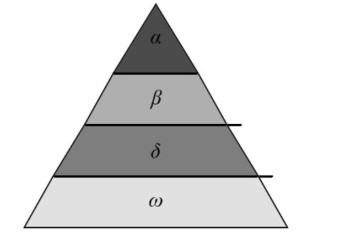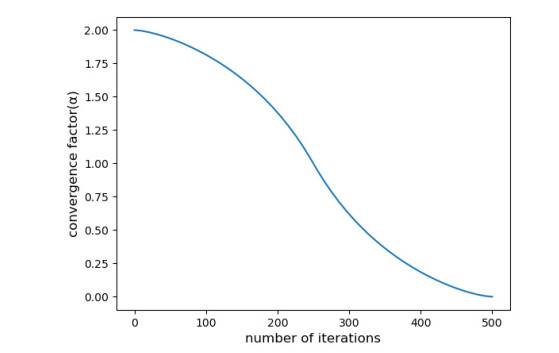|
[1]
|
F. Jiang, L. Wang, L. Bai, An adaptive evolutionary whale optimization algorithm, in 2021 33rd Chinese Control and Decision Conference (CCDC), (2021), 4610–4614. https://doi.org/10.1109/CCDC52312.2021.9601898
|
|
[2]
|
J. Kennedy, R. Eberhart, Particle swarm optimization, in Proceedings of ICNN'95-international conference on neural networks, 4 (1995), 1942–1948. https://doi.org/10.1109/ICNN.1995.488968
|
|
[3]
|
S. Mirjalili, A. Lewis, The whale optimization algorithm, Adv. Eng. Software, 95 (2016), 51–67. https://doi.org/10.1016/j.advengsoft.2016.01.008 doi: 10.1016/j.advengsoft.2016.01.008

|
|
[4]
|
S. Mirjalili, The ant lion optimizer, Adv. Eng. Software, 83 (2015), 80–98. https://doi.org/10.1016/j.advengsoft.2015.01.010 doi: 10.1016/j.advengsoft.2015.01.010

|
|
[5]
|
S. Mirjalili, S. M. Mirjalili, A. Lewis, Grey wolf optimizer, Adv. Eng. Software, 69 (2014), 46–61. https://doi.org/10.1016/j.advengsoft.2013.12.007 doi: 10.1016/j.advengsoft.2013.12.007

|
|
[6]
|
G. M. Komaki, V. Kayvanfar, Grey Wolf Optimizer algorithm for the two-stage assembly flow shop scheduling problem with release time, J. Comput. Sci., 8 (2015), 109–120. https://doi.org/10.1016/j.jocs.2015.03.011 doi: 10.1016/j.jocs.2015.03.011

|
|
[7]
|
J. Liu, J. Yang, H. Liu, X. Tian, M. Gao, An improved ant colony algorithm for robot path planning, Soft Comput., 21 (2017), 5829–5839. https://doi.org/10.1007/s00500-016-2161-7 doi: 10.1007/s00500-016-2161-7

|
|
[8]
|
M. H. Sulaiman, Z. Mustaffa, M. R. Mohamed, O. Aliman, Using the gray wolf optimizer for solving optimal reactive power dispatch problem, Appl. Soft Comput., 32 (2015), 286–292. https://doi.org/10.1016/j.asoc.2015.03.041 doi: 10.1016/j.asoc.2015.03.041

|
|
[9]
|
R. E. Precup, R. C. David, E. M. Petriu, Grey wolf optimizer algorithm-based tuning of fuzzy control systems with reduced parametric sensitivity, IEEE Trans. Ind. Electron., 64 (2016), 527–534. https://doi.org/10.1109/tie.2016.2607698 doi: 10.1109/tie.2016.2607698

|
|
[10]
|
A. K. M. Khairuzzaman, S. Chaudhury, Multilevel thresholding using grey wolf optimizer for image segmentation, Expert Syst. Appl., 86 (2017), 64–76. https://doi.org/10.1016/j.eswa.2017.04.029 doi: 10.1016/j.eswa.2017.04.029

|
|
[11]
|
R. E. Precup, R. C. David, R. C. Roman, A. I. Szedlak-Stinean, E. M. Petriu, Optimal tuning of interval type-2 fuzzy controllers for nonlinear servo systems using Slime Mould Algorithm Int. J. Syst. Sci., 54 (2023), 2941–2956. https://doi.org/10.1080/00207721.2021.1927236
|
|
[12]
|
S. Saremi, S. Z. Mirjalili, S. M. Mirjalili, Evolutionary population dynamics and grey wolf optimizer, Neural Comput. Appl., 26 (2015), 1257–1263. https://doi.org/10.1007/s00521-014-1806-7 doi: 10.1007/s00521-014-1806-7

|
|
[13]
|
C. A. Bojan-Dragos, R. E. Precup, S. Preitl, R. C. Roman, E. L. Hedrea, A. I. Szedlak-Stinean, GWO-based optimal tuning of type-1 and type-2 fuzzy controllers for electromagnetic actuated clutch systems, IFAC-PapersOnLine, 54 (2021), 189–194. https://doi.org/10.1016/j.ifacol.2021.10.032 doi: 10.1016/j.ifacol.2021.10.032

|
|
[14]
|
S. Wang, Y. Fan, S. Jin, P. Takyi-Aninakwa, C. Fernandez, Improved anti-noise adaptive long short-term memory neural network modeling for the robust remaining useful life prediction of lithium-ion batteries, Reliab. Eng. Syst. Saf., 230 (2023), 108920. https://doi.org/10.1016/j.ress.2022.108920 doi: 10.1016/j.ress.2022.108920

|
|
[15]
|
S. Wang, F. Wu, P. Takyi-Aninakwa, C. Fernandez, D. I. Stroe, Q. Huang, Improved singular filtering-Gaussian process regression-long short-term memory model for whole-life-cycle remaining capacity estimation of lithium-ion batteries adaptive to fast aging and multi-current variations, Energy, 284 (2023), 128677. https://doi.org/10.1016/j.energy.2023.128677 doi: 10.1016/j.energy.2023.128677

|
|
[16]
|
S. Gottam, S. J. Nanda, R. K. Maddila, A CNN-LSTM model trained with grey wolf optimizer for prediction of household power consumption, in 2021 IEEE International Symposium on Smart Electronic Systems (iSES), (2021), 355–360. https://doi.org/10.1109/iSES52644.2021.00089
|
|
[17]
|
W. Long, J. Jiao, X. Liang, M. Tang, An exploration-enhanced grey wolf optimizer to solve high-dimensional numerical optimization, Eng. Appl. Artif. Intell., 68 (2018), 63–80. https://doi.org/10.1016/j.engappai.2017.10.024 doi: 10.1016/j.engappai.2017.10.024

|
|
[18]
|
Z. J. Teng, J. L. Lv, L. W. Guo, An improved hybrid grey wolf optimization algorithm, Soft Comput., 23 (2019), 6617–6631. https://doi.org/10.1007/s00500-018-3310-y doi: 10.1007/s00500-018-3310-y

|
|
[19]
|
A. Kishor, P. K. Singh, Empirical study of grey wolf optimizer, in Proceedings of Fifth International Conference on Soft Computing for Problem solving, (2016), 1037–1049.
|
|
[20]
|
M. Pradhan, P. K. Roy, T. Pal, Oppositional based grey wolf optimization algorithm for economic dispatch problem of power system, Ain Shams Eng. J., 9 (2018), 2015–2025. https://doi.org/10.1016/j.asej.2016.08.023 doi: 10.1016/j.asej.2016.08.023

|
|
[21]
|
L. Rodriguez, O. Castillo, J. Soria, P. Melin, F. Valdez, C. I. Gonzalez, A fuzzy hierarchical operator in the grey wolf optimizer algorithm, Appl. Soft Comput., 57 (2017), 315–328. https://doi.org/10.1016/j.asoc.2017.03.048 doi: 10.1016/j.asoc.2017.03.048

|
|
[22]
|
J. Xu, F. Yan, O. G. Ala, L. Su, F. Li, Chaotic dynamic weight grey wolf optimizer for numerical function optimization, J. Intell. Fuzzy Syst., 37 (2019), 2367–2384. https://doi.org/10.3233/jifs-182706 doi: 10.3233/jifs-182706

|
|
[23]
|
E. Rashedi, H. Nezamabadi-Pour, S. Saryazdi, GSA: a gravitational search algorithm, Inf. Sci., 179 (2009), 2232–2248. https://doi.org/10.1016/j.ins.2009.03.004 doi: 10.1016/j.ins.2009.03.004

|
|
[24]
|
S. Dhargupta, M. Ghosh, S. Mirjalili, R. Sarkar, Selective opposition based grey wolf optimization, Expert Syst. Appl., 151 (2020), 113389. https://doi.org/10.1016/j.eswa.2020.113389 doi: 10.1016/j.eswa.2020.113389

|
|
[25]
|
S. Zhang, Q. Luo, Y. Zhou, Hybrid grey wolf optimizer using elite opposition-based learning strategy and simplex method, Int. J. Comput. Intell. Appl., 16 (2017), 1750012. https://doi.org/10.1007/s13042-022-01537-3 doi: 10.1007/s13042-022-01537-3

|
|
[26]
|
M. A. Navarro, D. Oliva, A. Ramos-Michel, D. Zaldivar, B. Morales-Castaneda, M. Perez-Cisneros, An improved multi-population whale optimization algorithm, Int. J. Mach. Learn. Cybern., 13 (2022), 2447–2478. https://doi.org/10.1007/s13042-022-01537-3 doi: 10.1007/s13042-022-01537-3

|
|
[27]
|
S. M. Bozorgi, S. Yazdani, IWOA: An improved whale optimization algorithm for optimization problems, J. Comput. Des. Eng., 6 (2019), 243–259. https://doi.org/10.1016/j.jcde.2019.02.002 doi: 10.1016/j.jcde.2019.02.002

|
|
[28]
|
S. A. Rather, N. Sharma, GSA-BBO hybridization algorithm, Int. J. Adv. Res. Sci. Eng., 6 (2017), 596–608.
|
|
[29]
|
V. Muthiah-Nakarajan, M. M. Noel, Galactic swarm optimization: a new global optimization metaheuristic inspired by galactic motion, Appl. Soft Comput., 38 (2016), 771–787. https://doi.org/10.1016/j.asoc.2015.10.034 doi: 10.1016/j.asoc.2015.10.034

|
|
[30]
|
D. Karaboga, B. Basturk, A powerful and efficient algorithm for numerical function optimization: artificial bee colony (ABC) algorithm, J. Glob. Optim., 39 (2007), 459–471. https://doi.org/10.1007/s10898-007-9149-x doi: 10.1007/s10898-007-9149-x

|
|
[31]
|
E. Cuevas, M. Gonzalez, D. Zaldivar, M. Perez-Cisneros, G. Garcia, An algorithm for global optimization inspired by collective animal behavior, Discrete Dyn. Nat. Soc., 2012 (2012). https://doi.org/10.1155/2012/638275
|
|
[32]
|
X. S. Yang, S. Deb, Cuckoo search via Lévy flights, in 2009 World congress on nature & biologically inspired computing (NaBIC), (2009), 210–214. https://doi.org/10.1109/NABIC.2009.5393690
|
|
[33]
|
M. A. Diaz-Cortes, E. Cuevas, J. Galvez, O. Camarena, A new metaheuristic optimization methodology based on fuzzy logic, Appl. Soft Comput., 61 (2017), 549–569. https://doi.org/10.1016/j.asoc.2017.08.038 doi: 10.1016/j.asoc.2017.08.038

|
|
[34]
|
S. Mirjalili, Moth-flame optimization algorithm: A novel nature-inspired heuristic paradigm, Knowl. Based Syst., 89 (2015), 228–249. https://doi.org/10.1016/j.knosys.2015.07.006 doi: 10.1016/j.knosys.2015.07.006

|
|
[35]
|
E. Mezura-Montes, C. A. Coello Coello, An empirical study about the usefulness of evolution strategies to solve constrained optimization problems, Int. J. Gener. Syst., 37 (2008), 443–473. https://doi.org/10.1080/03081070701303470 doi: 10.1080/03081070701303470

|
|
[36]
|
S. Gupta, K. Deep, H. Moayedi, L. K. Foong, A. Assad, Sine cosine grey wolf optimizer to solve engineering design problems, Eng. Comput., 37 (2021), 3123–3149. https://doi.org/10.1007/s00366-020-00996-y doi: 10.1007/s00366-020-00996-y

|
|
[37]
|
N. Mittal, U. Singh, B. S. Sohi, Modified grey wolf optimizer for global engineering optimization, Appl. Comput. Intell. Soft Comput., 2016 (2016). https://doi.org/10.1155/2016/7950348
|
|
[38]
|
F. Yan, X. Xu, J. Xu, Grey Wolf Optimizer With a Novel Weighted Distance for Global Optimization, IEEE Access, 8 (2020), 120173–120197. https://doi.org/10.1109/ACCESS.2020.3005182 doi: 10.1109/ACCESS.2020.3005182

|
|
[39]
|
R. Zheng, H. M. Jia, L. Abualigah, Q. X. Liu, S. Wang, An improved remora optimization algorithm with autonomous foraging mechanism for global optimization problems, Math. Biosci. Eng., 19 (2022), 3994–4037. https://doi.org/10.3934/mbe.2022184 doi: 10.3934/mbe.2022184

|
|
[40]
|
S. Li, H. Chen, M. Wang, A. A. Heidari, S. Mirjalili, Slime mould algorithm: a new method for stochastic optimization, Future Gener. Comput. Syst, 111 (2020), 300–323. https://doi.org/10.1016/j.future.2020.03.055 doi: 10.1016/j.future.2020.03.055

|
|
[41]
|
E. H. Houssein, N. Neggaz, M. E. Hosney, W. M. Mohamed, M. Hassaballah, Enhanced Harris hawks optimization with genetic operators for selection chemical descriptors and compounds activities, Neural Comput. Appl., 33 (2021), 13601–13618. https://doi.org/10.1007/s00521-021-05991-y doi: 10.1007/s00521-021-05991-y

|
|
[42]
|
W. Long, J. Jiao, X. Liang, S. Cai, M. Xu, A random opposition-based learning grey wolf optimizer, IEEE Access, 7 (2019), 113810–113825. https://doi.org/10.1109/ACCESS.2019.2934994 doi: 10.1109/ACCESS.2019.2934994

|
|
[43]
|
S. Wang, K. Sun, W. Zhang, H. Jia, Multilevel thresholding using a modified ant lion optimizer with opposition-based learning for color image segmentation, Math. Biosci. Eng., 18 (2021), 3092–3143. https://doi.org/10.3934/mbe.2021155 doi: 10.3934/mbe.2021155

|
|
[44]
|
U. KILIC, E. S. ESSIZ, M. K. KELES, Binary anarchic society optimization for feature selection, Romanian J. Inf. Sci. Technol., 26 (2023), 351–364. https://doi.org/10.1080/00207721.2021.1927236 doi: 10.1080/00207721.2021.1927236

|
























 DownLoad:
DownLoad: